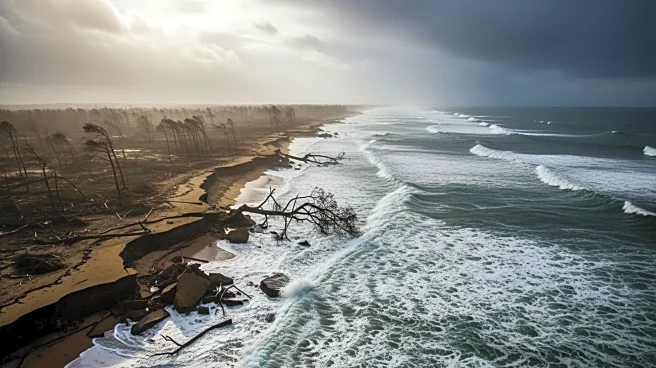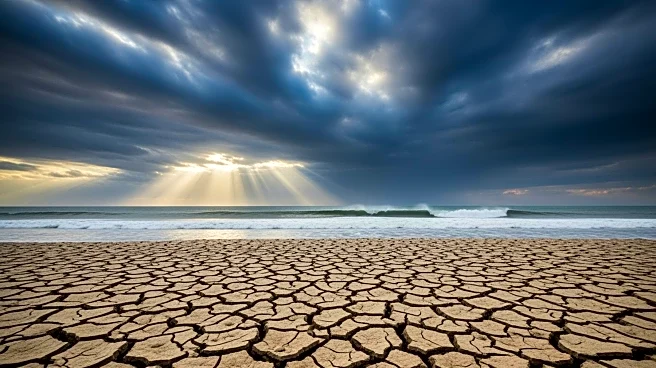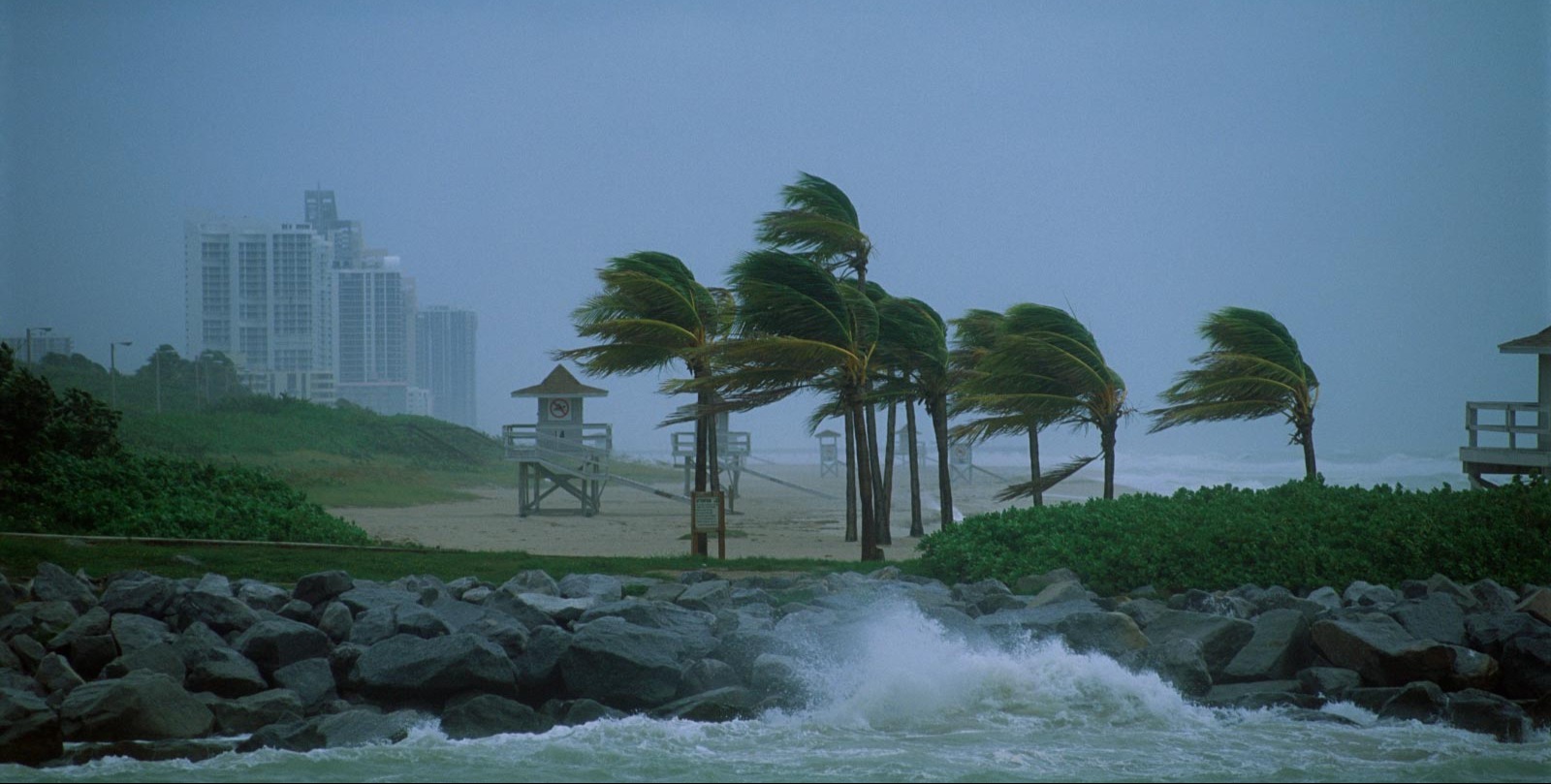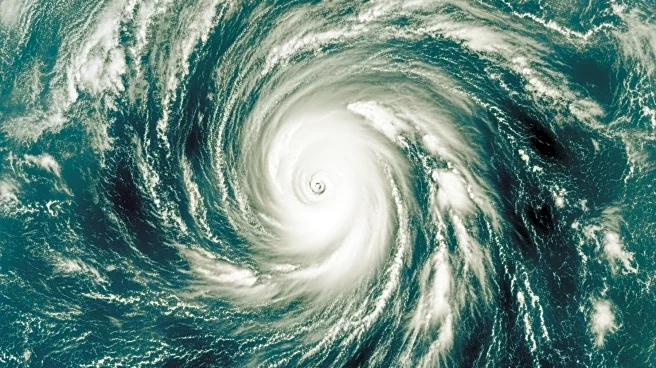What's Happening?
The World Bank has released a report detailing the extensive damage caused by Hurricane Melissa in Jamaica, estimating the total physical damage at US$8.85 billion. The hardest-hit areas include the parishes
of St Elizabeth, St James, and Westmoreland, which together account for 63% of the country's total damage. St Elizabeth, known for its agricultural production, suffered the most, with residential damage alone amounting to US$997.2 million. The report highlights the significant impact on infrastructure, agriculture, and non-residential buildings, with infrastructure damage estimated at US$2.9 billion. The World Bank, in collaboration with the Inter-American Development Bank and the United Nations Economic Commission for Latin America and the Caribbean, is supporting Jamaica's recovery efforts.
Why It's Important?
The damage from Hurricane Melissa represents a significant economic challenge for Jamaica, with the physical damage alone equating to 41% of the country's GDP. The report underscores the need for a coordinated recovery effort involving local institutions, the private sector, and communities. The reconstruction process presents an opportunity to build a more resilient Jamaica, with potential benefits from improved building regulations. The World Bank's involvement highlights the importance of international support in disaster recovery, emphasizing the need for strategic planning to ensure efficient and transparent rebuilding efforts.
What's Next?
The World Bank and the IDB are providing contingent financing and technical assistance to support Jamaica's recovery. The reconstruction process will require a strategic approach to rebuild infrastructure and housing, with a focus on resilience. The GRADE methodology will be used to provide rapid estimations of physical damage, aiding in the planning and execution of recovery efforts. The long-term support from international organizations will be crucial in coordinating a resilient recovery and reconstruction strategy.













